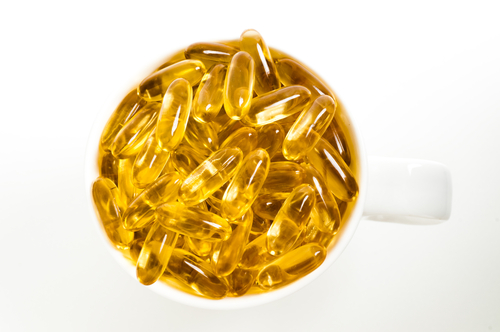By: Rachel Neifeld, RD, CDN
Yet another health benefit of vitamin D has been added to the long list of this micronutrient’s essential functions which include promoting calcium absorption and maintaining good bone health.
A study published in the January issue of Diabetes showed children of women with lowest blood levels of vitamin D had greater than two times the odds of developing type 1 diabetes than children of women with the highest blood levels. More research is needed to confirm that a woman’s vitamin D levels affect her child’s risk of developing diabetes, but until then, meeting the daily recommended intake of 600 IU (15 mcg) is essential during pregnancy- especially because most prenatal vitamins don’t do the job. 
With only 400 IU of vitamin D in most prenatal vitamins, getting vitamin D through diet and an additional supplement is important. An additional supplement is recommended because getting enough through diet alone is difficult as there are only a few sources of vitamin D-rich foods. These include cod liver oil, salmon and mackerel. The highest source of vitamin D in Americans’ diet comes from fortified foods such as milk which is fortified with 100 IU/cup. Many breakfast cereals, orange juices, yogurts, and margarines are fortified as well. Sunlight can also provide vitamin D, though care should be taken to get no more than the recommended safe exposure of 5-30 minutes twice a week as more than this can increase risk of skin cancer (and wrinkles!).
Try having at least one vitamin-D rich food such as a glass of fortified orange juice, a bowel of fortified cereal, or a cup of fortified yogurt at breakfast. Include a glass or two of milk each day, and a serving of low mercury fish (thankfully those highest in vitamin D are also low in mercury!) three times a week. With these great dietary sources plus your prenatal vitamin and an additional vitamin D supplement, both you and your baby will be getting enough vitamin D to reap its many benefits.
To know if you’re blood levels of vitamin D are within a healthy range, your doctor can perform a blood test. Results showing >30 nmol/L indicate adequate levels. To help you track your intake, the list below provides good food sources of vitamin D and how much of the vitamin each contains.
| Food | IUs per serving* | Percent DV** |
|---|---|---|
| Cod liver oil, 1 tablespoon | 1,360 | 340 |
| Swordfish, cooked, 3 ounces | 566 | 142 |
| Salmon (sockeye), cooked, 3 ounces | 447 | 112 |
| Tuna fish, canned in water, drained, 3 ounces | 154 | 39 |
| Orange juice fortified with vitamin D, 1 cup (check product labels, as amount of added vitamin D varies) | 137 | 34 |
| Milk, nonfat, reduced fat, and whole, vitamin D-fortified, 1 cup | 115-124 | 29-31 |
| Yogurt, fortified with 20% of the DV for vitamin D, 6 ounces (more heavily fortified yogurts provide more of the DV) | 80 | 20 |
| Margarine, fortified, 1 tablespoon | 60 | 15 |
| Sardines, canned in oil, drained, 2 sardines | 46 | 12 |
| Liver, beef, cooked, 3 ounces | 42 | 11 |
| Egg, 1 large (vitamin D is found in yolk) | 41 | 10 |
| Ready-to-eat cereal, fortified with 10% of the DV for vitamin D, 0.75-1 cup (more heavily fortified cereals might provide more of the DV) | 40 | 10 |
| Cheese, Swiss, 1 ounce | 6 | 2 |
* IUs = International Units.
** DV = Daily Value. DVs were developed by the U.S. Food and Drug
Administration to help consumers compare the nutrient contents among
products within the context of a total daily diet. The DV for vitamin D
is currently set at 400 IU for adults and children age 4 and older. Food
labels, however, are not required to list vitamin D content unless a
food has been fortified with this nutrient. Foods providing 20% or more
of the DV are considered to be high sources of a nutrient, but foods
providing lower percentages of the DV also contribute to a healthful
diet.
Sources:
1. Journal Diabetes via Physician’s Briefing: http://www.physiciansbriefing.com/Article.asp?AID=660167
2. National Institutes of Health; Office of Dietary Supplements: http://ods.od.nih.gov/factsheets/vitamind